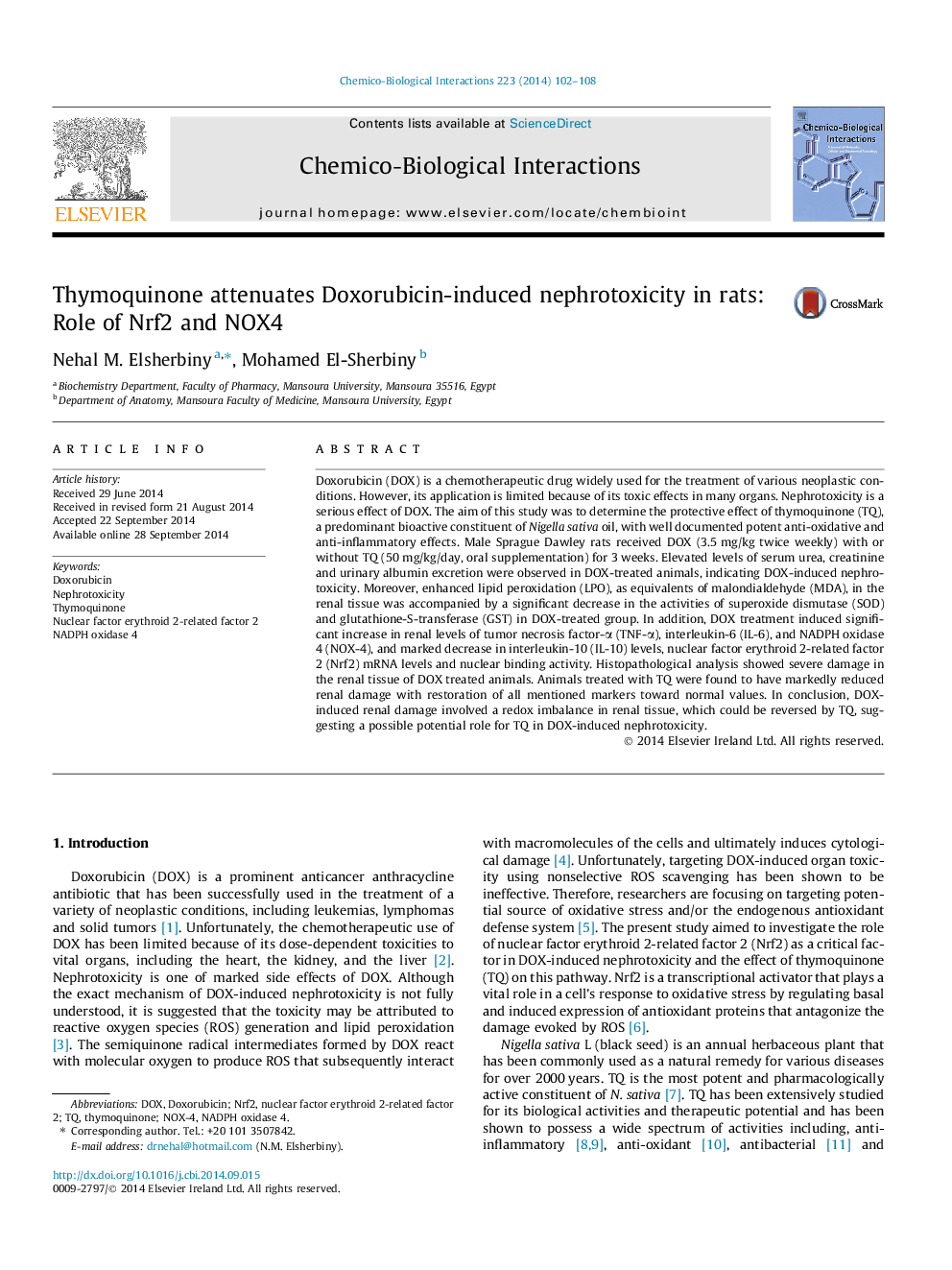| کد مقاله | کد نشریه | سال انتشار | مقاله انگلیسی | نسخه تمام متن |
|---|---|---|---|---|
| 2580327 | 1561618 | 2014 | 7 صفحه PDF | دانلود رایگان |

• Nephrotoxicity is a serious effect of Doxorubicin, a widely used anticancer drug.
• Thymoquinone (TQ) is a major constituent of Nigella sativa oil.
• TQ was reported to have potent anti-oxidative and anti-inflammatory effects.
• This study suggested a potential role for TQ in Doxorubicin-induced nephrotoxicity.
• TQ attenuated renal oxidative stress, inflammation and reversed redox imbalance.
Doxorubicin (DOX) is a chemotherapeutic drug widely used for the treatment of various neoplastic conditions. However, its application is limited because of its toxic effects in many organs. Nephrotoxicity is a serious effect of DOX. The aim of this study was to determine the protective effect of thymoquinone (TQ), a predominant bioactive constituent of Nigella sativa oil, with well documented potent anti-oxidative and anti-inflammatory effects. Male Sprague Dawley rats received DOX (3.5 mg/kg twice weekly) with or without TQ (50 mg/kg/day, oral supplementation) for 3 weeks. Elevated levels of serum urea, creatinine and urinary albumin excretion were observed in DOX-treated animals, indicating DOX-induced nephrotoxicity. Moreover, enhanced lipid peroxidation (LPO), as equivalents of malondialdehyde (MDA), in the renal tissue was accompanied by a significant decrease in the activities of superoxide dismutase (SOD) and glutathione-S-transferase (GST) in DOX-treated group. In addition, DOX treatment induced significant increase in renal levels of tumor necrosis factor-α (TNF-α), interleukin-6 (IL-6), and NADPH oxidase 4 (NOX-4), and marked decrease in interleukin-10 (IL-10) levels, nuclear factor erythroid 2-related factor 2 (Nrf2) mRNA levels and nuclear binding activity. Histopathological analysis showed severe damage in the renal tissue of DOX treated animals. Animals treated with TQ were found to have markedly reduced renal damage with restoration of all mentioned markers toward normal values. In conclusion, DOX-induced renal damage involved a redox imbalance in renal tissue, which could be reversed by TQ, suggesting a possible potential role for TQ in DOX-induced nephrotoxicity.
Journal: Chemico-Biological Interactions - Volume 223, 5 November 2014, Pages 102–108